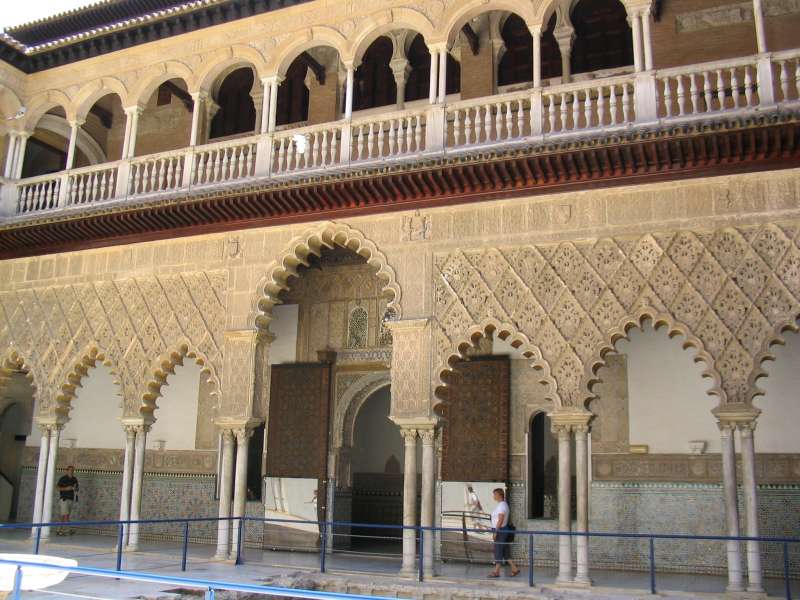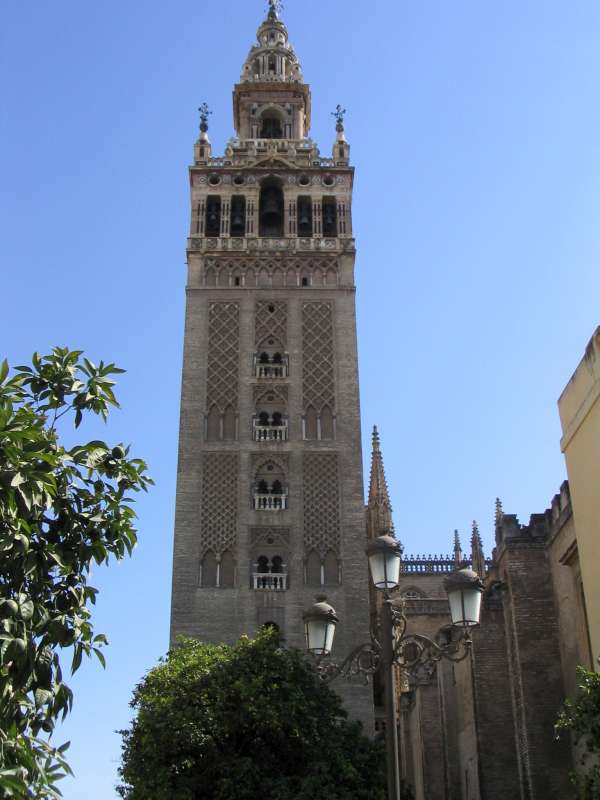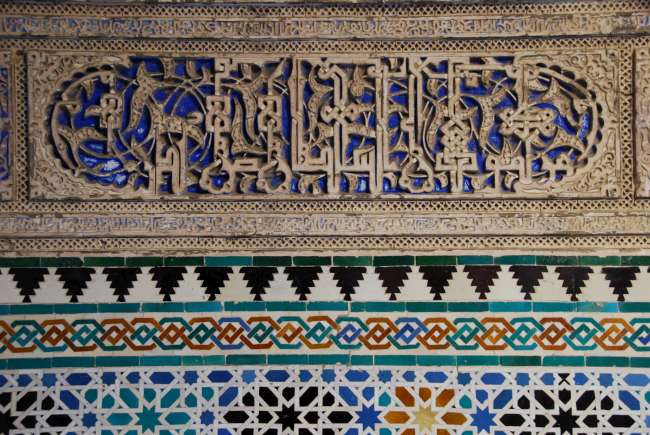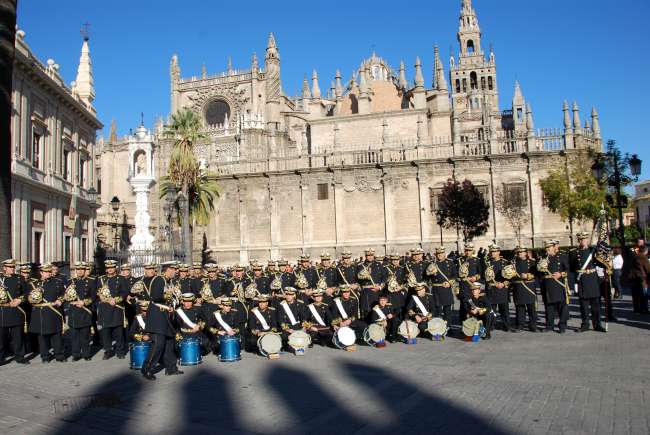
World Monument Photography
July 27, 2024
Seville is one of the three largest Andalucian cities known for its Muslim architecture and Flamenco dancers. Seville dates back to Greek times in the 8th or 9th century B.C. It was later occupied by the Phoenicians then the Carthaginians, who destroyed the city in 216 B.C. When Julius Caesar occupied the Iberian peninsula, he re-built Seville and made it a Roman colony. The Vandals then took the city, but no significant events were recorded in history during this time.

After 712, the Muslim governor Musa ibn Nusayr entered Seville and ushered an era of prosperity. During the 8th and 9th century, Seville was settled by people from several parts of the Muslim world, primarily from Syria. Seville was nicknamed “Hims of Andalucia,” where Hims refers to a city in northern Syria.
Political stability in Seville was reached when Abd al-Rahman I entered Andalucia and declared it an independent nation from the Abbasid Empire in 755. The people of Seville lived in an era of prosperity and growth for around a century until it was interrupted by the Norman siege of 844. After raids that continued for one and a half years, the Andalucian monarch Abd al-Rahman II built a fort and naval fleet to protect Seville. This naval fleet formed the basis of several exploratory missions launched from Seville to the “Sea of the Great Fog” – a name given to the Atlantic Ocean by Muslim sailors. Indeed, there are several documented voyages of merchants sailing the “Sea of the Great Fog” and returning the next year with great riches – undoubtedly from trades with Native American civilizations. Indeed, tablets were found in Arizona, which resemble tablets used by Arabic schools at the time to teach mathematics. These tablets date back to the 9th and 10th centuries.
With the fall of the Caliphate of Cordoba in 1035, Seville became an independent Taif kingdom under the Abbadid dynasty. The independent kingdom of Seville witnessed a period of great military, economic, and social prosperity. Of the thirty or so Taif, or city-state, kingdoms, Seville was considered among the most powerful and influential.
In 1085, Alfonso VI of Castile invaded Toledo. This sent shivers throughout Andalucia. Furthermore, Alfonso VI demanded large tribute from the remaining Muslim Taif kingdoms. Up to this point, Christian and Muslim kingdoms throughout Andalucia often waged war against each other just as much as forming alliances with each other against fellow Christian and Muslim kingdoms. For example, Alfonso VI`s father, Ferdinand I helped the Taif king of Saragossa retake the city of Barbastro to keep the Norman Christians out of the picture. Another famous example is that of Rodrigo Diaz, otherwise known as El-Cid. He was a freelance warrior that served in Muslim courts just as much as he had done in Christian courts. His ultimate goal was to carve out his own kingdom, which he came close to achieving by submitting Valencia under his control. He eventually lost control of the city (and his life!) in 1099 to the advancing Almoravid army which swept through the Iberian peninsula from North Africa.

What the Muslims were not aware of is the growth of religious ferver and the growth of a militant form of Christianity that the papal leaders instigated in an attempt to assert political power throughout Europe. Indeed it is well documented that during his exile in Toledo, Alfonso VI was negotiating with Pope Gregory VII to recognize him as the only rightful heir to the thrown of all Christian lands in Spain. In doing so, Alfonso VI has allowed bishops to be sent from the Vatican that preached in Christian Spain sentiments of hate towards the Arabs and Muslims at large in denouncing them as barbaric savages.
After Alfonso VI succeeded in occupying Toledo without ever having to attack the city. He demanded large tribute from its inept leader al-Qadir. This large tribute drained the Taif Kingdom of Toledo of its wealth, stirred up resentment against its ruler who eventually offered Alfonso VI the keys of the city in exchange for his safety outside the city. Alfonso VI gladly accepted and took over the city. Upon its conquest, Toledo`s great libraries came under the control of Alfonso VI and eventually became a base of translation of virtually all of Europe`s early knowledge of all Arab and Greek scientific knowledge and philosophy. Many books, however, have been destroyed under orders of bishops sent by the Vatican into Castile.
Following his success in Toledo, Alfonso VI demanded tribute from all other Taif kingdom states in an effort to drain them of their resources. This allowed Andalucian gold to run up to the Christian north, where it was spent in war preparation, building of churches, monasteries, and castles.
One Taif kingdom that refused to pay tribute to Alfonso VI was Seville. At the time, Seville was ruled by a powerful ruler by the name of al-Mamun. He refused to allow his kingdom to fall under the dominion of Castile. After an unsuccessful effort on his part to unite the effort of the Taif kingdoms against Castile, he reluctantly requested the aid of the Almoravids. The Almoravid Empire was a powerful empire that included all of North Africa. Its spirit stemmed from a deep religious conviction in their mission to unite all Muslim peoples. They enjoyed great wealth, stability, and a powerful, organized and a sizable army. After the Almoravids crossed over the Iberian peninsula in 1086, Alfonso VI abandoned his siege of Saragossa and rushed down to Badajoz (between Spain and Portugal) to face the Almoravid army. This battle resulted in the annihilation of Alfsono VI`s army, although he was able to escape. The Almoravid army slowly reconquered one Andalucian city after another, including Valencia in 1099. The Almoravids, however, were unable to extract Toledo from Alfonso VI`s hands.

Desperate for help, Alfonso VI requested help from the pope, but the crusading army arrived too late. This single act solidified the Pope`s position as a key player in the Iberian peninsula, which would have disasterous effects on the social structure of the Spanish population. Up to this point, the social structure in Andalucia was considered to be first rate; meaning that Andalucia was socially far more mature that other places in the world in that its society allowed for freedom of religion, it was free of racial discrimination, and was a model for tolerance that was unequalled to any society to this day. The re-education of the Christian north in identifying the Muslims as savage infidels served to de-humanize the Muslims, which made the atrocities committed against the Muslims (culminating in the expulsion, torture, and persecution of some 3 million Muslims) possible. It is also noteworthy that the Spanish Inquisitions which followed the conquest of Granada in 1492 was sanctioned and orchestrated by the Roman Catholic church in the Vatican.
To secure Muslims against Alfonso VI`s forces, the Almoravids established themselves permanently in the Iberian peninsula in 1094 and declared Seville to be their capital. This brought a brief period of security to the Muslims in the Iberian peninsula.
Following their decline (and loss of several key Portugese cities such as Lisbon), another tribe from Western Africa deposed the Almoravids, called the Almohads, in 1147. They extended the reach of their empire to the borders of Egypt in the east, together with the Iberian peninsula. They transferred their capital to Seville in 1170, where they founded the Great Mosque(today only the minaret – called Giralda – survives). Although they were able to win several battles against the Christian north, they only acted as to stop their advance. In 1212, Almohad army was defeated in a surprise alliance of all Christian states – Castile, Aragon, Navarre, and Portugal at the Battle of Las Navas de Tolosa in the Sierra Morena. Terrible crimes were committed in neighboring villages in the name of Christianity after this battle.
Almohad`s reign in Seville coincided with two great scholars emanating from that region: Ibn Rushd (Averros) and Musa Ibn Maymum (Maimondes). Averros was born in 1126, under Almohad rule. He was a well accomplished physician and philosopher. Among his greatest works were a line-by-line commentary on Aristotle`s work, and “Incoherence of the Incoherent” which was an answer to al-Ghazali`s earlier work about the co-existence of faith and reason. In his treaties he explains how reason and logic does not contradict religion. Desperate for a more rational thinking that was acceptable by the Catholic Church, his teachings became the foundation of learning in the University of Paris. Averros was also well-known for his medical knowledge. He often traveled from one city to another offering free medical services to the poor and needy.
Maimondes was a well accomplished Arab Jewish (Sephardic Jewish) philosopher. He was responsible in reviving the Hebrew language by producing the first lines of Jewish poetry since the times before the Roman expulsion of Jews from Jerusalem 1,100 years earlier. His time was known as the Golden Age of Jewish literature. It is important to note this was achieved at the time of Almohad rule, which many criticize as being religiously intolerant.
After the defeat of the Almohads in 1212, the Almohad empire in Iberia reverted back into three main Taif kingdoms: Cordoba, Seville, and Granada. The Catholic church began a system of “Church of the Purifed”, which was a crusade against Christians that had a weak faith. In 1233, the Papal Inquisitions – a precursor of Spanish Inquisitions – was established.

In 1247, a siege began on Seville. The proud defenders of Seville kept up its defenses against its invaders. In an attempt to secure their own safety, Granada agreed to help Fernando III of Castile in the siege of Seville. Also, after a 17 month siege, Fernando III reached a secret agreement with the Jewish elders in Seville that their safety would be guaranteed in exchange for control of the city. On November 23, 1248, they secretly opened the gates for the Castilian army. Betrayed by its Jewish inhabitants and Granada neighbors the city could no longer defend itself and capitulated. In an effort to prevent the Great Mosque from being converted into a church with a church bell being placed into its minaret, the population rushed to dismantle the minaret of the Great Mosque. Fearing for his prize, Fernando III issued a warning the populace that their houses would be destroyed and they women and children will be sold into slavery if the minaret was destroyed. Eventually, the mosque was left untouched by the local population. The Great Mosque was converted into a cathedral and all that remains of it is the minaret – today known as Giralda. Perhaps the reason why the minaret survived to this day is the deep fear that Fernando III instilled in the populace centuries ago!
Seville became the largest metropolitan area in Christian Spain. Fernando III moved the Castilian capital to Seville. He started work on expanding and changing the Great Mosque into a Cathedral which continued well into the 16th century.
In March 31, 1492, Christopher Columbus sailed with his 3 ships from the port of Seville. Why did Christopher Columbus believe that he could reach India with through a western route? Some historians today believe it was due to the stories of the great riches that Muslim merchants made by sailing through the Atlantic Ocean in the 9th and 10th centuries. He falsely assumed these lands to be India. To help him in translation, he brought with him Arabic sailors! When he landed in Cuba, he called the land “Cubanacan”, or Great Khan, since he though he was in Asia. Indeed, the first man made object he found in Cuba was a mosque, undoubtedly from African Muslim settlers centuries earlier.
From this point forward, Seville became the main trade port with the new Spanish colonies in the New World. This brought immense wealth to the city. Indeed this was the reason why Seville was the only Andalucian city to escape economic and political decline after Christian conquest. In 1543, the Consulate of the Indies, which all Spanish trading ships trading in the Americas, was founded.
Seville started to fall into decline after two devasting events. First the plague in the 1649 forced to change the administrative capital of the Consulate of the Indies to Cadiz. The second was the decline of Spanish control over its colonies reduced Spanish wealth.
Today, Seville is a prosperous Spanish city known for its art and flamenco dancers. One interesting observation is that some words used in Flamenco dancing are actually phrases used in the Muslim call for prayers – which to this day is called five times a day from minarets around the Muslim world. Indeed Flamenco dancing traces its roots to Moriscos who were forced to suppress their religion and their anguish is represented by the strong and fast movements of feet associated with Flamenco dancing.